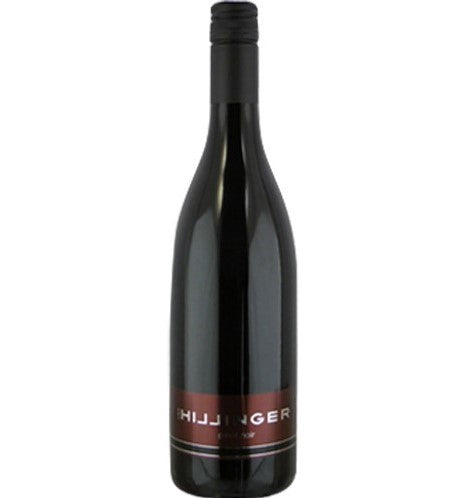1
/
of
1
Leo Hillinger Eveline Pinot Noir - 2017 (750ml)
Leo Hillinger Eveline Pinot Noir - 2017 (750ml)
4.0
Rated 4.0 out of 5 stars
1
Regular price
$24.99
Sale price
$24.99
Regular price
$26.99
Unit price
/
per
Medium garnet color with a fruity nose of strawberries underlined by earthy and spicy notes, and reminiscent of fine wood. A supple tannin structure and gamey texture complements the palate.
Winemaker's Notes
Winemaker's Notes
Share :

- varietal
- Region
- Sub - Region
- Type
- Reviews
Product Review
Medium garnet color with a fruity nose of strawberries underlined by earthy and spicy notes, and reminiscent of fine wood. A supple tannin structure and gamey texture complements the palate.
Pinot Noir is responsible for some of the world’s finest wines. Famed for producing the red wines of Burgundy and the Côte d’Or in particular, it is now widely grown in cool climates across Califonia and Oregon, and with increasing success in New Zealand. Although typically used to produce varietal wines, Pinot Noir makes a significant contribution in the wines of Champagne, where it is vinified as a white wine and blended with Cardonnay and Pinot Meunier. On the whole, fresh summer fruit of strawberries, raspberries and red cherries tend to be the identifying qualities, however richer versions express darker fruit including black cherries (kirsch), cherry cola, leather and violets to name a few.
The "Red Wine Quarter" receives almost 2,000 hours of sunshine per year. Add to that, the warm winds from the Pannonian Plain and you can understand the regions reputation as a red-wine producer. Its most prominent red grape varities are Zwiegelt, Blaufränkisch, St.Laurent and Pinot Noir. The Lake Neusiedl region in the northen area of the region is known for fine Prädikat-level dessert wines produced from Welschriesling, Chardonnay and Scheurebe.
NA
Red wine is wine made from dark-coloured grape varieties. The color of red differs based on the grapes variety or varieties used.Interestingly, black grapes yield a juice that is greenish-white. The actual red color comes from anthocyan pigments (also called anthocyanins) from the skin of the grape (exceptions are the relatively uncommon teinturier varieties, which produce a red colored juice). Most of the production centers around the extraction of color and flavor from the grape skin.
4.0
Rated 4.0 out of 5 stars
Based on 1 review
5
Rated out of 5 stars
0
Total 5 star reviews: 0 4
Rated out of 5 stars
1
Total 4 star reviews: 1 3
Rated out of 5 stars
0
Total 3 star reviews: 0 2
Rated out of 5 stars
0
Total 2 star reviews: 0 1
Rated out of 5 stars
0
Total 1 star reviews: 0 100%would recommend this product
1 review
- TSTom S.Verified BuyerI recommend this productRated 4 out of 5 stars2 years agoAn everyday wine
Lovely wine but not outstanding.
Was this helpful?
